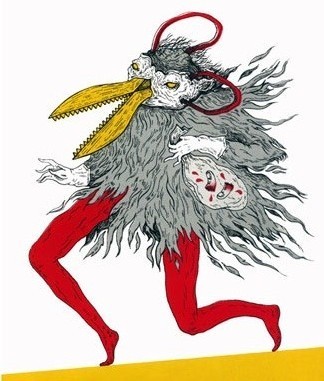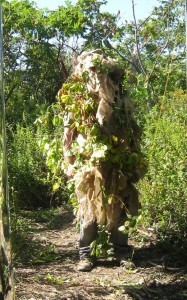The Paris Review's Blog, page 910
June 6, 2012
Scary Kids’ Books, Annoying Writers
Bookseller by day, brewer by night!
Amazon.com has acquired sixty-two-year-old Avalon Books, family owned since its founding.
The eternal question: What type of annoying writer are you?
Great Gatsby fashion.
Terrifying children's books of the world.
June 5, 2012
The 1966 Tee, Ready for Summer
At left, a candid shot of the 1966 tee, taken over the weekend. I’m here to tell you that in addition to being soft, cozy, and nifty looking, it makes a great beach cover-up, too! Get yours now!
Hiding in Plain Sight
Hanna Shell in camo.
Why do so many American soldiers look, as one Brooklynite at the office of Cabinet Magazine put it on a recent Friday, like they are trying to blend in to computer screens? The question was directed at Hanna Rose Shell, a a historian, filmmaker, and professor in the Program in Science, Technology, and Society at MIT, who had come to New York to talk about Hide and Seek: Camouflage, Photography, and the Media of Reconnaissance. Cabinet had arranged to host a reading and sound performance, which promised “camouflage paraphernalia galore.”
We soon found out the answer. It seems the pixelated, “digitized” designs have been standard issue across the branches for a decade, while the iconic, splotchy pattern of green, brown, olive, and black seen in episodes of G.I. Joe and the military-themed action movies of the 1980s is no longer predominant. Officially known as the Woodland pattern of the Army’s M81 battle dress uniform, the older, iconic camo was initially designed, Shell found, to mimic the environment of a region in the Soviet Union where military researchers thought the Cold War would turn hot. Though no longer used to hide soldiers, close approximations of this earlier version can be found today on cargo shorts and Louis Vuitton luggage. It’s been replaced with a series of tiny squares and “micropatterns” that mimic a digital photograph with poor resolution, with the idea that the new uniforms would be more difficult to detect in images produced by contemporary digital surveillance. Also, as a military camouflage expert admitted, “the boys think it looks cool.”
While each generation of camouflage has been developed for a specific physical environment, part of what Shell demonstrates in Hide and Seek is that, in a more general way, camouflage has adapted in reaction to changes in photography and film technologies. The word itself first appeared in 1914, a derivation of camoufler (“to diguise”), coined by French artist Lucien-Victor Guirand de Scévola, a society portrait painter who led workers and civilian artists in France’s military section de camouflage. It entered English the following year. Since then, as both photography and surveillance have grown into regular parts of civilian life, innovations in camouflage have marked efforts to become invisible in an increasingly visual age.
Event goers arriving at Cabinet’s offices early had trouble finding Shell, who was especially well hidden in a clump of late rush-hour traffic on the BQE. After about twenty minutes, Sina Najafi, the magazine’s editor-in-chief, came outside with an announcement–“She’s now in Brooklyn!”–and offered beer.
Shell arrived, marched to a small stage area at the front of the room and, after some quick preparations, tossed what looked like a plastic bag full of folded burlap to a friend in the front row. “Can you put this on?” she asked. (His response: “Only if it’s absolutely necessary.”) The bag contained a ghillie suit, a head-to-toe outfit sometimes covered in twigs and underbrush, designed for hunters, birders, and snipers hoping to blend into their surroundings. By the midpoint of her reading, Shell had been coaxed into putting it on behind the podium, though she hadn’t needed much prodding. Pointing to a projection of an instructional photograph that had been distributed by the British War Office in 1916, showing–or, more accurately, not showing–a sniper hiding in a grassy field, she asked, “How do you teach somebody, using photographs, using film, in fact at all, how do you teach somebody how not to be seen? The implication would seem to be that you’re supposed to understand that if you needed to get lost in a similarly gravelly, grassy habitat, you would garnish yourself with local foliage, add face paint, and burrow behind grass under the rock.”
Ghillie suit.
Her friend stood and opened the bag, pulling out one large piece of material designed for the sniper’s body, and a smaller one made to cover her head. “This is a ghillie suit, which is a sniper suit,” Shell continued. “And, basically, if you were a sniper, or even if you were an amateur sniper, or if you just wanted to hide–what I would suggest, if you wanted to hide in that photograph, honestly, is you would make yourself a suit like this, and there's instructions right there.” Cutting and stitching instructions, which Shell uncovered during archival research at England’s Imperial War Museum, had been distributed to the audience. “Okay, I’ll wear it,” she said. “If somebody else wears the hat. I don’t think I can wear the hat. Does somebody else want to wear the hat? Well, all right, I’ll try to wear the hat.”
She stepped into the suit, which she pulled over her jeans, and reached for a pile of leaves and branches near her laptop to demonstrate how a hunter could attach brush for hiding in a woodsy area. The suit seemed to be an odd fit. “I don’t know, I haven’t worn–I used to wear this all the time. But I haven’t worn it in a while,” she said. A few hands went up, and she answered questions while fumbling with the burlap. “Um, okay, well, more questions, then, while this is–I think somebody else wore this! Now, I don’t know if I'll be able to do this for, for too long, cause it’s a little stuffy in here. Making ghillie suits is really fun. If we had more time I’d walk you through it. But, we don’t. If anyone wants to put this one on, though, you’re welcome to try it,” she said. She let out a high, squeaky laugh. “Especially, like, in a few minutes.” Dressed for the woods, Shell continued more or less where she had left off, talking into a microphone clipped under the headpiece and looking at the audience through a narrow slit at eye level.
After aerial photography and reconnaissance became a part of the first World War, Shell explained, “the issue of how to hide from these cameras really takes over. What I found is that, in terms of some kind of systematic set of practices that are learned and studied, camouflage wasn’t taught until this sort of photographic surveillance was all-encompassing. While you do see lots of people hiding and lots of deception in war throughout the nineteenth century, you don’t see this kind of systematization of those practices. And similarly, in the case of camouflage in nature, people have noted for a really long time that animals blend into their backgrounds, right? But until the mid-nineteenth century, these were considered to be examples of God’s disguises, like God was planting these little tricks in the world. It was only once we started having, on the one hand, an evolutionary understanding of how protective coloration could be understood as a kind of productive technology, along with humans wanting to document and incorporate that, to model for their own practice, that it becomes camouflage. And it’s kind of fascinating. There was no camouflage until 1914, and then all of a sudden there are camouflage schools, and camouflage stores, and instruction manuals. Suddenly there are natural historians going out, taking pictures of animals that are hidden, and saying, this is what we’re trying to do. This is camouflage.”
Alex Carp is an editor of the McSweeney’s Voice of Witness book series.
Four Ties, and Counting
 A few months ago our friend Kirk Miller, of Miller’s Oath, made a small batch of Paris Review ties–twenty-four, to be exact. I bought one. Several members of our board did the same. We have four ties left—one of each! So, as you see, this is a true limited edition. Give one of them to your dad for Father’s Day. Each comes with a free subscription to The Paris Review. Buy one today!
A few months ago our friend Kirk Miller, of Miller’s Oath, made a small batch of Paris Review ties–twenty-four, to be exact. I bought one. Several members of our board did the same. We have four ties left—one of each! So, as you see, this is a true limited edition. Give one of them to your dad for Father’s Day. Each comes with a free subscription to The Paris Review. Buy one today!
While supplies last.
4 Ties, and Counting
 A few months ago our friend Kirk Miller, of Miller’s Oath, made a small batch of Paris Review ties–twenty-four, to be exact. I bought one. Several members of our Board did the same. We have four ties left–one of each! So, as you see, this is a true limited edition. Give one of them to your father for Father’s Day. Each comes with a free subscription to The Paris Review. Buy one today!
A few months ago our friend Kirk Miller, of Miller’s Oath, made a small batch of Paris Review ties–twenty-four, to be exact. I bought one. Several members of our Board did the same. We have four ties left–one of each! So, as you see, this is a true limited edition. Give one of them to your father for Father’s Day. Each comes with a free subscription to The Paris Review. Buy one today!
While supplies last.
Sad Young Literary Men: The Pleasures of Oslo, August 31st
The best films scramble your brain, changing you slightly. You emerge from the dark with new, blinking eyes, adjusting to a different world. It’s why for many of us a good movie is a small miracle, worthy of devotion. So far, Norwegian director Joachim Trier has made two such small miracles, Reprise and Oslo, August 31st. Two sharp films that, when I saw them, settled down into some small part of me, changing the way I thought about youth, ambition, and the meaning of life, if only for a night.
I suspect the films of Trier speak particularly to anyone with literary ambitions, anyone who knows what it’s like to be besotted by a work of art and anyone who wants to create something strong and beautiful and true. The director has an uncanny eye for the worries of sad young men afflicted with dreaminess about art and ideas, the same sort of disease written about in Walker Percy’s The Moviegoer or Richard Ford’s The Sportswriter. His exuberant, French New Wave–influenced debut, Reprise, is the story of two boyish twenty-something writers wrestling with literary ambitions and madness. Reprise is charming, formally daring, and focused on youthful folly; in Oslo, August 31st, the folly is over, and it’s time for the morning after.
Sad Young Literary Men: The pleasures of Oslo, August 31st
The best films scramble your brain, changing you slightly. You emerge from the dark with new, blinking eyes, adjusting to a different world. It’s why for many of us a good movie is a small miracle, worthy of devotion. So far, Norwegian director Joachim Trier has made two such small miracles, Reprise and Oslo, August 31st. Two sharp films that, when I saw them, settled down into some small part of me, changing the way I thought about youth, ambition, and the meaning of life, if only for a night.
I suspect the films of Trier speak particularly for anyone with literary ambitions, anyone who knows what it’s like to be besotted by a work of art and anyone who wants to create something strong and beautiful and true. The director has an uncanny eye for the worries of sad young men afflicted with dreaminess about art and ideas, the same sort of disease written about in Walker Percy’s The Moviegoer or Richard Ford’s The Sportswriter. His exuberant, French New Wave-influenced debut, Reprise, was the story of two boyish twenty something writers wrestling with literary ambitions and madness. Reprise is charming, formally daring, and focused on youthful folly; with Oslo, August 31st, the folly is over, and it’s time for the morning after.
Dr. Seuss, Tintin, and a Really Late Library Book
A 1932 original Tintin in America cover sells for a record-breaking 1.3m euros at auction.
American Pastoral , coming to a multiplex near you. (Okay, maybe an art house.)
Definitely coming to the multiplex, Guy Richie’s Treasure Island.
The name really says it all: Haruki Murakami Bingo.
Dr. Seuss’s politically-charged World War II cartoons.
An honorable patron returns a book to an Irish library...80 years past its due date.
June 4, 2012
A Conspiracy in a Teapot
 At three in the morning, Almaty’s tiny airport is no match for the crackling expanses of sky and snow. As we rise from our seats, the local women shrug on their fur coats, shape shifters assuming animal form. New York hasn’t seen much winter lately, and I’m glad of evidence that the seasons still exist—even if I had to come on a business trip to Kazakhstan to find it.
At three in the morning, Almaty’s tiny airport is no match for the crackling expanses of sky and snow. As we rise from our seats, the local women shrug on their fur coats, shape shifters assuming animal form. New York hasn’t seen much winter lately, and I’m glad of evidence that the seasons still exist—even if I had to come on a business trip to Kazakhstan to find it.
The long smooth road from the airport is lined with luxury-car dealerships and dilapidated beer shops, their signs askew. “Double beer!” one sign cries, sounding drunk. The streets are named after poets, heroes, and Soviet institutions. (Meet me at the intersection of Goethe and Komintern. Sentences like these are the reward for time spent in the former Soviet Union.) We pass a fluorescent Eiffel Tower standing sentry in front of a shopping center. “What’s that?” I ask the driver. “The Eiffel Tower,” he answers, matter-of-fact. I’m reminded of a Kyrgyz woman who told me that the Great Wall of China did not exist. Though she herself had visited the wall, she insisted that the section she’d seen was the only real part, built recently to dupe foreigners. “But you can see it from space,” I protested. “The Chinese are very clever,” she answered. “And those Buddhas in the caves? You think those are a thousand years old? All from the eighties. Trust me.”
Flannery O’Connor Reads, 1959
 It wasn’t until Open Culture shared this 1959 recording of Flannery O’Connor reading the title story of A Good Man Is Hard to Find that we realized we didn’t know what her voice sounded like. The thirty-four-year-old author’s Georgia accent is pronounced, and she puts over the story with a deadpan panache that brings out its full humor and horror. Truly a treat for a gray day.
It wasn’t until Open Culture shared this 1959 recording of Flannery O’Connor reading the title story of A Good Man Is Hard to Find that we realized we didn’t know what her voice sounded like. The thirty-four-year-old author’s Georgia accent is pronounced, and she puts over the story with a deadpan panache that brings out its full humor and horror. Truly a treat for a gray day.
The Paris Review's Blog
- The Paris Review's profile
- 305 followers









